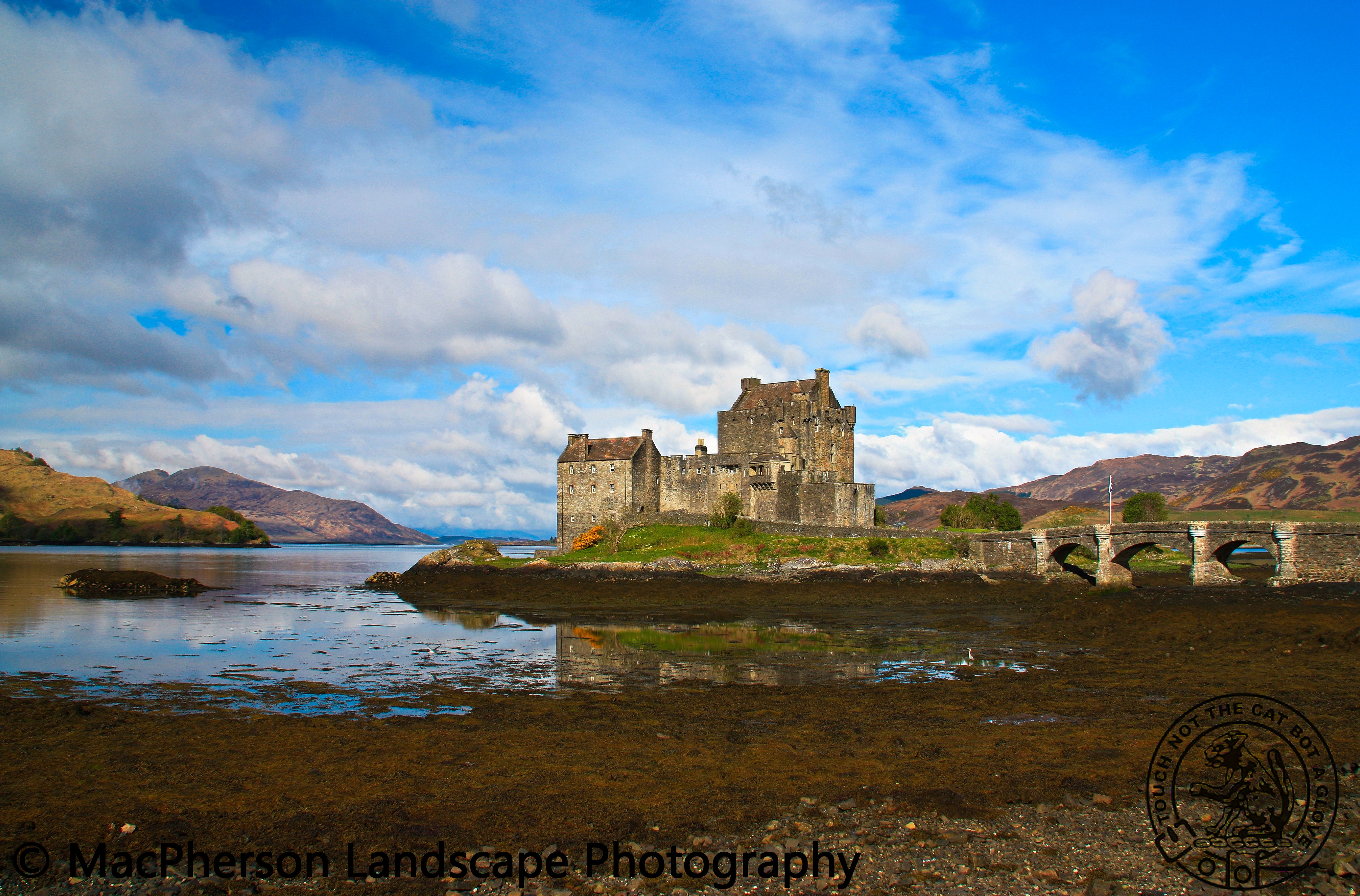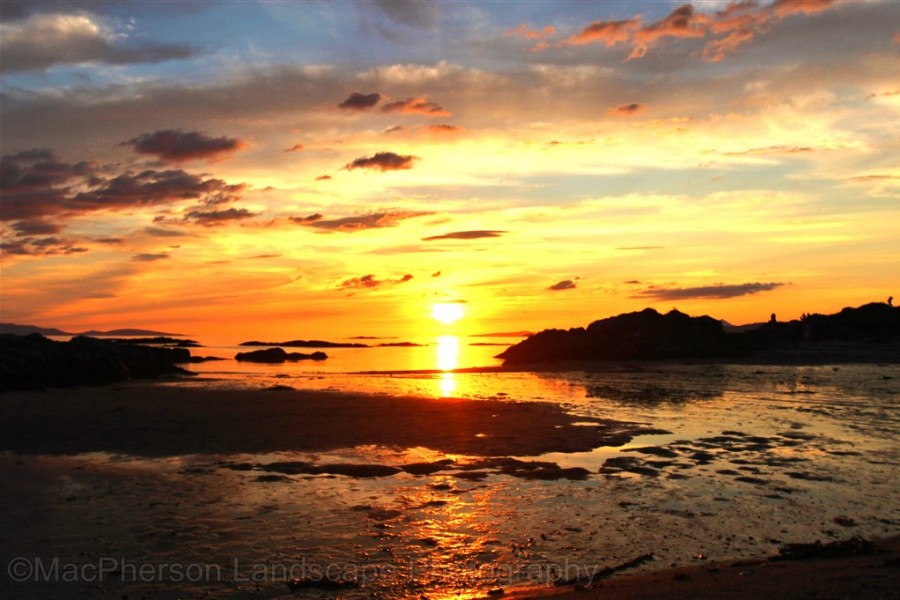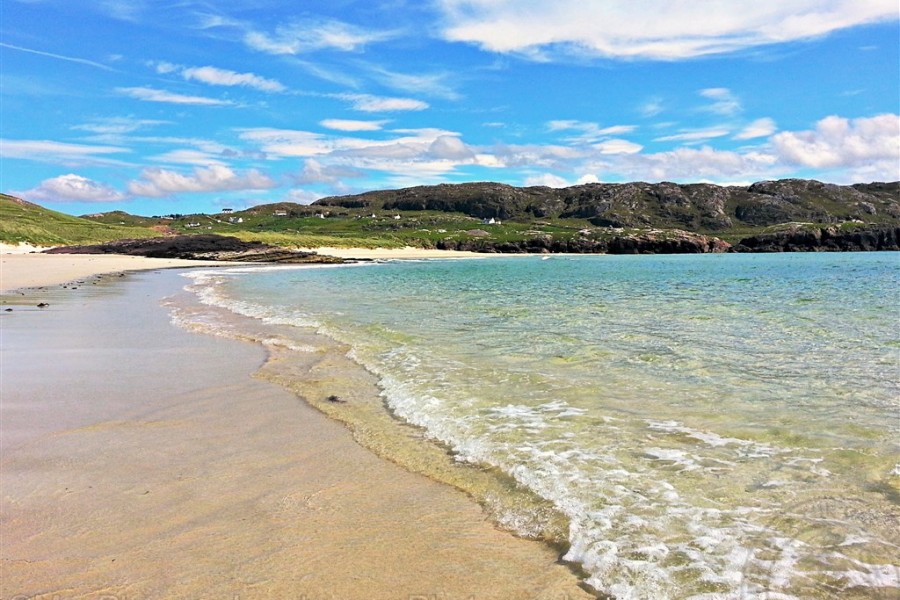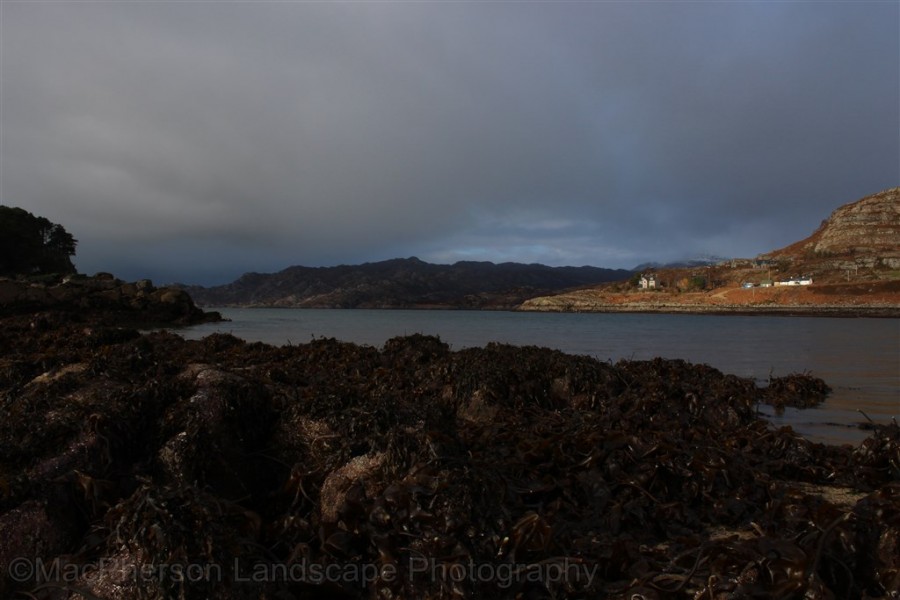Instantly recognisable, Eilean Donan Castle is one of the most photographed and beautiful tourist attractions in Scotland, and has a long and varied history.
Overlooking the Isle of Skye, the Island of Donan, sits at the meeting of three Lochs: Duich, Alsh and Long, it was first inhabited by the martyred Irish Saint Donan, who founded a Monastic cell in 634, although a possibility of an Iron Age presence exists, as there is evidence of a Vitrified fort on the site.
The Island was first fortified in the 13th Century at the behest of Alexander II, by Kenneth MacKenzie who built a massive curtain wall, a keep and a huge Northern tower. The walls were 4.3 metres thick and encompassed the whole island in an effort to defend the lands of Kintail from incursions from the Norse.
During the next 400 years the castle varied in size, and one point in the 1400’s it was dramatically reduced with much of the curtain wall de-constructed and a much smaller castle in it’s place, presumably for defensive reasons. In the 1500’s further construction took place with a courtyard and bastion being built on to the existing building
It was in 1719, when a smaller lesser known Jacobite uprising took place with the support of the Spanish, that the Castle was destroyed by the Royal Navy.
It lay in ruins until 100 years ago when the then Laird Lt colonel John MacRae-Gilstrap and his Clerk of Works Farquhar MacRae undertook to restore the castle as a family home, adding the bridge leading onto the island. Construction halted for WW1 and Eilean Donan Castle was finally restored to it’s current beauty in 1932.
It was in 1955 that the castle was open to visitors and in 1983 it passed to the Conchra Charitable Trust, which was established by the MacRae family to help maintain the iconic building.



